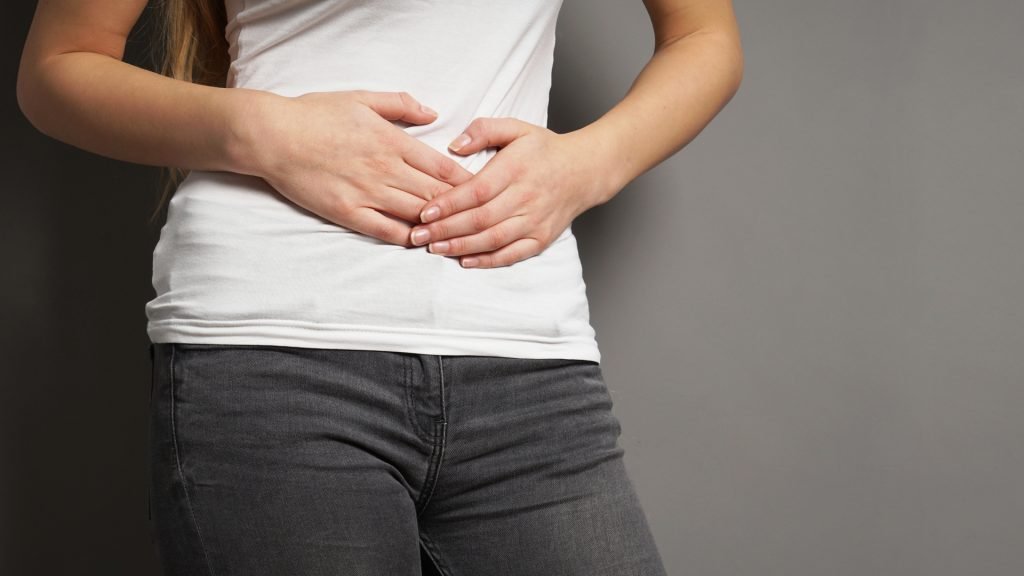Is food causing your symptoms or could it be something else??
Did you know that many ‘fresh’ foods are sprayed in chemicals to preserve the foods. How long are these foods in transit before they get to a warehouse to get to the supermarket before it reaches your kitchen table??
These days, finding organic food is easier than ever. Back in the day, if you wanted to eat organic, you’d have to grow your own or find a health food shop. The range of organic products available today – even in supermarkets – leaves hardly anything to be desired. You can buy wholemeal flour as well as white flour, light and dark pasta, organic strawberries and organic asparagus, natural juices, organic meat, sausages, fish, poultry, eggs and dairy. Even ready or almost-ready meals such as pizza, tortellini and frozen chips are available organic, as are delicatessen specialities, wines, beer and spirits. Even those with a sweet tooth can get their money’s worth: organic sweet cakes and biscuits sweetened with sugar or honey are readily available in most supermarkets. Note though, organic sugar (and honey) is sugar and impacts your blood sugar level in the exact same way as regular sugar.
Whether purchased from a supermarket, a health food shop or a farm shop, organic food has always been more expensive than conventional food. However, over the last few months we have seen prices skyrocket. Not only is food – any food – now more expensive than it used to be, but we also have much higher energy prices to contend with, which further reduces the money we’ve got left to spend on food. So, is organic food worth the expense?
What are the benefits of organic food?
There are many good reasons to reach for organic products. Health, sustainability, animal welfare, and the wish to support organic farming all come into the decision to buy organic.
Organic food and animal feed is grown without synthetic pesticides and herbicides, resulting in less chemical residue on the finished produce. In an attempt increase yields and resistance to pests and harsh weather conditions, the chemical industry started developing agricultural chemicals just after the WWII.
They were used liberally for decades and did, in fact, do what it said on the tin. It only gradually became apparent that they might also be harmful to both human and animal health and, what’s worse, are persistent, i. e. they are virtually indestructible and will pollute our soils for centuries to come.
Needless to say, they are in the food chain by now and are here to stay. Babies are now born with hundreds of chemicals already in their bodies, and persistent pollutants have now even reached polar bears. If they’re affected, what hope to we have?
Gradually, some of those offending chemicals were banned in the US, the EU, and the UK to varying degrees, but not all of them. Moreover, those that are no longer allowed for use in the industrialised countries instead sold to developing countries. Of course, because they are already everywhere and are persistent, those substances are found in organic as well as conventional food. However, organic farming at least puts a stop to their use, reducing future pollution, and, of course, the resulting produce and meat contains fewer harmful chemicals than conventional food. This is one reason why organic food is healthier.
Without pesticides, herbicides, greenhouses and synthetic fertilisers, organic produce must fend for itself, unlike conventional foods, which is mollycoddled from sprouting to harvest. Rather than being grown in huge monocultures, organic fruit and vegetables are planted alongside other plants that help protect them. Plants contain natural substances that fight pests and other threats to the plant’s health and increase its resistance to varying weather conditions. As it happens, these substances are not just good for the plant, but for us to. They are called phytonutrients. All plants contain them, but there are more of them in organic fruit and veg because they need them for their own defence.
Organically grown food is also more likely to be allowed to grow to full ripeness on the tree or in the field, at least if it is destined for local shops rather than being shipped around the world. That way, it has more time to accumulate and develop nutrients – vitamins, minerals and phytonutrients – that contribute to the nutritional value of the end product.
Animals raised to produce organic meat, dairy or eggs, must be fed organic animal feed. Their welfare has a much higher priority than it does in conventional farming, resulting in more space for the animal to move around, more time spent outdoors and straw covered surfaces rather than bare concrete or wire mesh to stand or lie on. Although with reference to beef and dairy, ‘organic’ does not necessarily mean ‘grass-fed’, organic cattle is fed much more grass – both fresh and hay – than conventional cows. Grass is the food cows evolved to eat, resulting in healthier animals and consequently healthier animal products. Unlike the grains or soya conventional cattle is fed on, grass and herbs have a higher omega-3 content, which, of course, affects the fatty acid composition of the resulting meat and dairy products.
As it turns out, food – whether that’s plant of animal food – that is grown and raised the way it should, even tastes better.
More and more people want to act responsibly not only for their own nutrition and for better taste, but also for animal welfare and the environment. They want a sustainable food system, and those who buy organic products support the goal of organic farming to create closed cycles between animals, humans and plants. But this comes at a price that is harder and harder to afford.
Why is organic food more expensive?
Agricultural chemicals were once introduced to increase yields – which they did. Consequently, organic farming does not result in the same amount of food for the same or even increased effort.
Natural pest control can be rather time-consuming. Ideally, you can group plants together in such a way that they protect each other, but sometimes organic farmers have to literally pluck pests off their plants or get down on the ground to pull weeds.
Obviously, allowing indoor and outdoor space for the animals also reduces the number of animals a farm can raise. Organic cheese, unlike mass-produced, cheap cheese, has been given time to ripen and develop flavour. Organic sourdough bread is allowed to ferment and rise naturally, rather than sped up with artificial rising agents.
So, all that effort, space and time put into the production of organic food and the reduced yield that goes with that, is, of course, reflected in the price – but also the flavour and nutritional value of the resulting food products.
If you can’t afford to buy organic only, would it help to pick and choose?
Yes, it absolutely would. Our conventional food is polluted to varying degrees. Some plants are hardy and/or have very effective self-defence, such as onions, carrots, beetroot, parsley, chicory and more. The phytonutrients they produce protect them from pests (and are also very beneficial for us). Consequently, such plants are left to their own devices and allowed to grow without chemical interference. However, many other types of fruit and vegetables are soft and delicate and easily fall prey to pests: potatoes, berries, apples and spinach are among the most sprayed foods and should be purchased organic if at all possible.
In the US, the Environmental Working Group publishes the “Dirty Dozen” (most polluted fruit and veg) and “Clean 15” (least polluted) to help customers prioritise. It must be said that, of course, the United States and Europe have vastly different laws concerning the use of agricultural chemicals. It is a sobering thought that kale – which at least in its natural state is so often hyped as a superfood therefore popular in health-conscious household – is treated with a carcinogenic chemical called DCPA or dacthyl … in the US. The European Union banned DCPA in 2009. However, delicate fruit and veg remain delicate and are more likely to be treated with pesticides and/or herbicides than tougher plants, and in that respect the EWG guides are still useful.

Another aspect to consider is surface area. The smaller the plant product the larger the surface area. Grains and seeds provide a larger area for pests, bacteria and moulds to settle on, making them more vulnerable. Therefore, seeds and grains receive more treatment, just like soft fruit does. So, if you need to prioritise your spending on organic foods, consider buying organic rice, pasta and flour.
What if there is no way that you can afford anything organic?
The unhealthiest foods on the planet right now are ultra-processed industrial products. They are high in sugar, unhealthy fats and salt while being completely devoid of nutrients. Only the most cheaply produced agricultural products go into them, and animal welfare or the protection of the environment are not on the agenda. If you shun junk foods for the benefit of home-cooked meals and snacks from conventionally produced ingredients, you have already made the biggest step towards good health.
Also, not all food that doesn’t carry the label “organic” is doused in chemicals. Many farmers grow their fruit and veg and raise their animals in a sustainable way. To all intents and purposed, their products are organic, but they’re not allowed to call them that for various reasons. It could be that pesticides and herbicides are used on a neighbouring farm or have been used on their property in the past, preventing them from ever obtaining the classification as organic for their own crops. It could be that the process of getting accredited is just too lengthy and expensive, so they don’t bother. As a result, they can’t sell their products for quite the same price. It is worth checking out the farm shops and farmers markets in your area. Ask questions, read websites, find out more about the food grown where you live. It might be just as good as organic.
Buying local and seasonal food also means that you will get fruit and vegetables that have been allowed to grow to full ripeness and are still fresh by the time they reach your table. A conventional carrot pulled from the ground yesterday may be a lot more nutritious (and cheaper!) than an organic avocado picked in Brazil six weeks ago. “Organic” does not mean healthier as a general rule.
Some of the pesticide-laden foods you may not need at all. Grains are staples in the Western diet. Bread, pasta and rice grace our tables several times a day, so buying all of that in organic quality can quickly add up to a very high food bill. And yet, we don’t really need these foods at all. Such starchy carbohydrate foods mess with our blood sugar levels and are known to contribute to overweight and obesity. They are at the heart of type II diabetes and many scientists even consider them addictive. At the same time, starchy foods do not contain any nutrients we couldn’t get elsewhere. A diet of vegetables, low-sugar fruit, nuts, seeds, meat, fish, dairy and eggs provides everything we need. So, if you reduce your intake of bread, rice, pasta and baked goods, buying only organic – if any – your health would even benefit.
No matter how much organic food you can afford and for all the good this might do, if you do not have a lot of money there is still a lot you can do – for your health, the environment, and the animals – by choosing wisely and taking and interest in how, where and by whom your food is produced. The best thing you can do is to cook from scratch. After that, prioritise and select your (organic) foods wisely.
Share this article …


